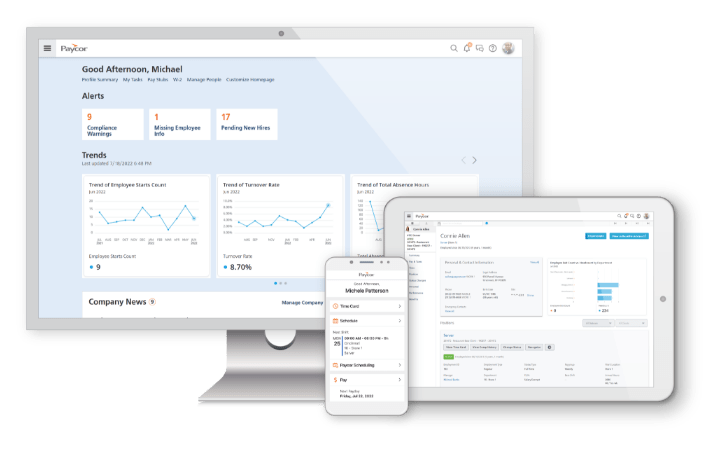
Fall HR & Compliance
Virtual Summit
Refresh your HR knowledge on everything from ADA to leave laws to the ethics of management. In these on-demand virtual summit sessions, you’ll hear from exciting influencers, get critical compliance updates, and hear expert-level insights from HR leaders.

Hear from our Attendees
“The speakers were genuine and natural in delivering the presentation. The audience continually commented that they loved their energy.”
Sherrie G.
“Everything was amazing today! The speakers were just incredibly awesome!”
Elijah K.
“The webinar was very informative and the presenters were very knowledgeable.”
Romana C.
Sessions

Duration: 1 hour 3 min
It’s 2024 – What is a “Drug Free Workplace” Nowadays?
Attorney and HR junkie Julie Pugh gives a practical review of today’s patchwork of state-specific, industry-specific, and even job-specific drug-free workplace guidelines.

Duration: 60 min
Don’t Stop Engaging: Creating a Workplace that Rocks
Join us for an enlightening journey into the realm of employee engagement and experience! In this presentation, we delve into the secrets of creating a workplace where employees thrive, grow, and feel truly valued.

Duration: 53 min
DOL Updates: What They Mean for You
In this webinar we review 2024 changes to DOL rules involving FLSA overtime exemptions, worker classification tests, and tipped employee regulations.

Duration: 60 min
Beat Burnout: Practical Strategies for Thriving in the Workplace
Feeling overwhelmed at work? You’re not alone. In this webinar, we dive into the four key dimensions of workplace burnout—physical, mental, attitudinal, and skill-related. We also uncover the root causes of burnout, from overwork and unclear roles to lack of recognition.

Duration: 60 min
Stop Doing the Dirty Work for Frontline Managers
Isn’t it time your management stopped over-relying on HR? This webinar is designed to help you determine ways to make managers more self-sufficient in handling routine employee feedback and performance issues.

Duration: 60 min
Understanding the Maze of Leave of Absence Laws
This webinar navigates the complex landscape of leave laws including family leave (FMLA), changes to the California Family Rights Act (CFRA), Pregnancy Disability Leave (PDL), Paid Family Leave (PFL), Workers’ Comp leaves, and more.

Duration: 60 min
Don’t Let DEI Die: Five Strategies to Revive DEI to Impact Employee Engagement and Business Success
At a time when corporations and organizations are announcing the elimination of DEI teams and programs, now more than ever HR practitioners must ensure that these values don’t “die.”

Duration: 51 min
Getting Leaders Buy-in for HR Strategic Initiatives
Leadership absolutely must view HR as a strategic partner that can align human capital strategies with organizational goals. This webinar can help.
Paycor Virtual Summit by the Numbers
Above-average registration
More than 14,000 HR professionals signed up!
Strong turnout rate
Nearly 7,000 HR professionals have attended!
Extraordinary approval
And 95% of HR professionals say they’ll be back!

Resources
The HR COE is an action plan based on Paycor’s proprietary data and research. Think of it as your roadmap to achieving HR excellence in talent management, workforce management, benefits and the employee experience.
Live Webinar
Managing Certified Payroll in a Multi-State World
Operating across state lines brings opportunity, but it also brings complexity.
11:00am ET, January 29th, 2026
Live Webinar
Leadership Preparation for 2026
HRCI & SHRM credit available
In 2026, HR will face mounting pressure from economic uncertainty, generational changes, and the rapid rise of AI. Do your frontline managers have the skills they need to navigate this complex, high-stakes era of HR?
2:00pm ET, January 27th, 2026
Live Webinar
Evolving Workforce: The Power of Upskilling, Reskilling, and Skills-Based Hiring
HRCI & SHRM credit available
As the workforce adapts to changes in business, technology, and the economy, organizations must ensure employees have the skills to keep up.
2:00pm ET, January 20th, 2026
Article
Read Time: 20 min
What’s a W-2 Form? Responsibilities, Deadlines, & How to File
Have questions about reading, filling out, and filing Form W-2s? Here’s a complete guide that explains W-2 Forms, employer responsibilities, and deadlines.











